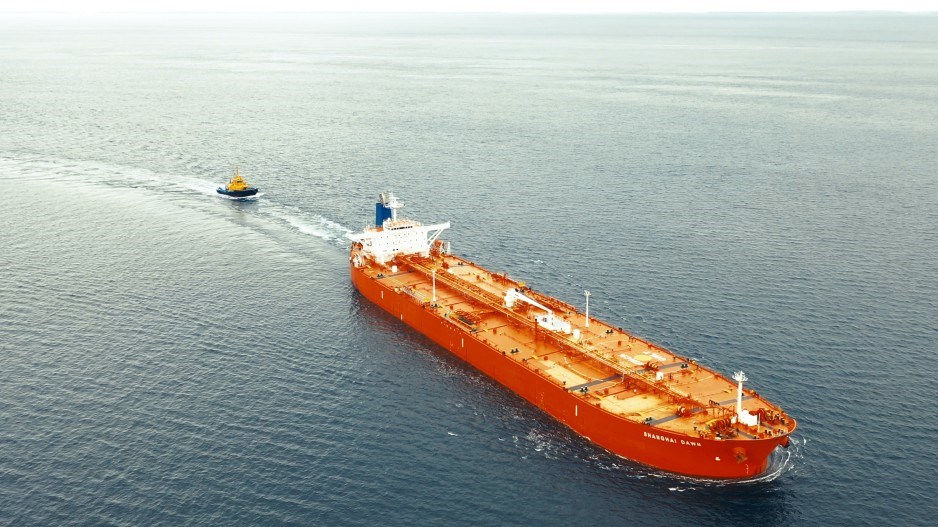Given a global glut and low prices for oil, it might come as a surprise that the Trans Mountain pipeline continues to be maxed out.
While there has been a drastic decline in demand for oil and refined fuels, due to restrictions on travel and work during the COVID-19 pandemic, it appears exports of Alberta crude to the U.S. and China have actually ticked up recently.
That can partially be attributed to the fact that less oil is now moving by rail. But it also speaks to the fact there continues to be a demand for Alberta heavy oil, even when the world is awash in shale oil, which serves different refining markets.
According to data provided by Statistics Canada, 1.7 million barrels of Alberta crude shipped to China through Vancouver by tanker between February and April. The value of those exports totaled $83.5 million, which works out to an average of $47.67 per barrel.
Another $132 million worth of Alberta crude shipped to Oregon, and $140 million to California.
Trans Mountain reports a 4% apportionment on the pipeline for June. That means it is over-subscribed and will be running at maximum capacity.
Generally, in recent years, the Trans Mountain has been over-subscribed by an average 20% on an annual basis, according to Trans Mountain.
“When a pipeline experiences significant and prolonged apportionment like in the case of the existing Trans Mountain Pipeline, it’s one signal that more capacity is needed,” the company states in a bulletin.
“Trans Mountain has remained full, operating its full capacity, every month, so far, of the year,” said Trans Mountain spokesperson Ali Hounsell.
The fact that Trans Mountain is still operating at maximum capacity at a time when there is a glut of cheap oil is partly due to the fact that less oil is moving by rail, which is more expensive.
And though there is a glut of light oil, like the kind produced by American shale oil producers, there is still a demand for the kind of heavy oil that Alberta produces.
Complex refineries in the U.S. and China need heavy oil, which explains why American producers have been exporting their light oil, while American refiners still buy heavy oil from Alberta.
“The refiners that process the heavies, there’s not a lot of alternatives that they can take, so they continue to need them,” said Ben Brunnen, vice-president of oil sands, fiscal and economic policy for the Canadian Association of Petroleum Producers (CAPP).
David Huntley, a retired Simon Fraser University physics professor, who has taken it upon himself to count tankers moving in and out of Westridge Marine Terminal because he can’t get information on oil-by-tanker exports from Canadian regulators, has a noted a “flurry” of oil tanker shipments out of Westridge Marine Terminal recently.
In May, he counted five oil tankers shipped out of Westridge Marine Terminal, apparently bound for China. In total, he counted 16 tankers leaving Westridge Marine Terminal between January and May, with eight of them destined for China.
The Port of Vancouver reports a 129% increase in crude oil movements out of the port this year, as of April, compared to the same period last year.
Similar spikes of exports to China have happened in the past when Alberta oil prices were low.
China typically buys its heavy oil from other producers because it’s cheaper than getting it from Canada. But when the price for Alberta oil drops, as it did in 2018 and again this year, it makes Alberta oil more attractive to Chinese buyers.
Oil prices actually went into negative territory briefly earlier this year – a function of futures buyers getting stuck with shipments of oil they couldn’t unload, after a global pandemic brought air traffic, and the economy in general, to a grinding halt.
Oil prices remain low, but according to oilprices.com, Western Canadian Select (WCS) is trading at only about US$3 less per barrel than West Texas Intermediate (WTI), with WTI selling for US$38.76 per barrel as of June 10. The differential between WCS and WTI is usually much wider, with WCS selling at a much lower price per barrel.
“With the decrease in supply (from curtailments), but a need for refiners to process the heavies, that would explain why the differential is as tight as it is,” Brunnen said.
After a brief price war earlier this year, Saudi Arabia and Russia agreed to cut oil production to address a sudden glut. Alberta producers also cut production, to the tune of 800,000 barrels per day.
That curtailment has led Alberta producers to move less oil by rail, Brunnen said.
“A lot of the barrels that went to rail have disappeared, so companies are going to be competing to ship more by pipe. We will probably see an increase in demand for shipping on pipe, which probably explains why we see some limitations, some capacity constraints, on the TMX line.”
“I'm not surprised by this trend,” said Resource Works executive director Stewart Muir, who has also been counting oil tanker movements out of Vancouver.
“China has spent years building integrated port, pipeline and refinery capacity. Meanwhile, Canada has matured to be a supplier of choice of sought-after heavy oil.
“This is exactly the situation forecast by the dozen companies that got together almost a decade ago to press for the additional Trans Mountain pipeline capacity. All we lack is the new, bigger pipeline, and that will be solved soon.”
He referred to the $12.6 billion expansion of the Trans Mountain pipeline currently underway. That expansion, which will see the addition of a second pipeline, will increase Trans Mountain’s capacity from 300,000 barrels per day to 890,000.




